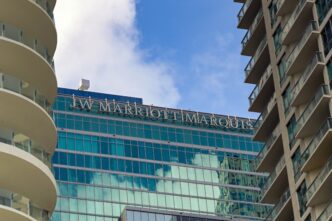As hurricane seasons grow more severe, Florida developers are increasingly constructing homes designed to withstand the formidable forces of nature. The growing adoption of hurricane-resistant construction techniques reflects heightened concern among homeowners and builders in the state, driven by escalating insurance costs and recurring devastating storms.
In recent developments, communities like Hunters Point near Tampa Bay and Babcock Ranch in Punta Gorda are pioneering efforts to enhance storm resiliency. Hunters Point homes, for example, feature unique construction techniques, including raising living spaces 16 feet above ground to reduce flood damage. The homes are tied down with steel straps and constructed with reinforced materials to endure hurricane-force winds. William Fulford, a resident, reported minimal damage to his $1.25 million home during Hurricane Milton, attributing this to the house’s robust design.
Developers are not only focused on individual homes but are building entire communities with hurricane resilience in mind. This approach helps protect neighborhoods and maintain property values amid Florida’s unpredictable weather patterns. The Federal Alliance for Safe Homes highlights these developments as leading examples of how resilient infrastructure can look, providing insights into the future of homebuilding in hurricane-prone areas.
At Hunters Point, homes are built with an airtight design, ensuring that there are no structural seams vulnerable to wind. Metal straps fortify all levels of these properties, securing roofs, walls, and foundations, an imperative strategy, according to experts, to prevent catastrophic failures.
Babcock Ranch, on the other hand, employs natural topography and technological innovations to safeguard against flooding. The development sacrifices housing density to preserve natural water flow paths and incorporates ‘smart lakes’—solar-powered systems that adjust water levels in anticipation of storms. All utilities are buried underground, ensuring resilience against power outages during severe weather events.
Despite advancements, experts like Leslie Chapman-Henderson advise caution against complacency. Homebuilders must continue to innovate, although no structure can be deemed entirely hurricane-proof. This sentiment is echoed by Fortified, a program developing standards for stronger roofing, emphasizing that true disaster preparedness involves ongoing improvements and not resting on current achievements.
The rise of hurricane-resistant homes in Florida signifies a proactive response to an increasingly volatile climate. As developers invest in resilient construction, they are not only securing properties against immediate threats but also setting foundations for long-term sustainability. However, ongoing vigilance remains essential, reminding residents and developers alike that while progress is promising, nature’s unpredictability demands constant adaptation.
Source: Businessinsider








